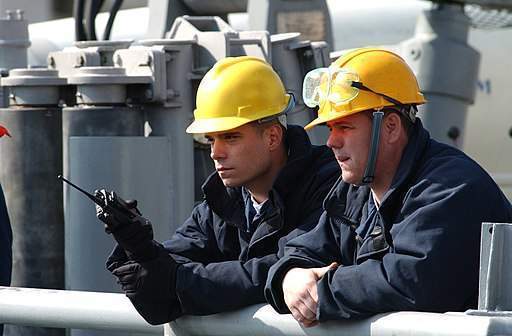
From power line maintenance to uranium enriching – the world of power production can be a risky business. Future Power profiles some of the most dangerous jobs in the energy sector.
Coal mining
Coal has historically been one of the most dangerous industries to work in. While conditions have improved significantly over the years, thousands of workers still die each year due to poor regulations and diseases caused by inhalation of toxic gases and dust produced in the mining process.
While exact numbers are hard to pin down, estimates suggest mining-related accidents kill about 12,000 people per year. The International Labour Organization reported that, although the mining industry employs around 1% of the global labour force, it sees 8% of fatal accidents.
China has the highest rate of fatalities amongst its coal workers, with Small Business reporting an average of 13 fatalities per day, accounting for about 80% of the world’s total despite producing only 35% of the world’s coal.
Power line workers

US Tariffs are shifting - will you react or anticipate?
Don’t let policy changes catch you off guard. Stay proactive with real-time data and expert analysis.
By GlobalDataLinemen have to work quickly to repair power lines, sometimes during the very storm which caused the initial damage. Even in ideal conditions, workers are still dealing with high voltage lines situated high above the ground, leading to it being dubbed one of the most dangerous jobs in the US.
Workers face a range of serious and potentially fatal injuries, including electrocutions, falling from height, and injuries from falling objects.
A report from T&D stated that between 30 and 50 workers in every 100, 000 are killed on the job every year, while many others suffer from mechanical trauma and loss of limbs from electrical burns. Such figures are more than double the fatality rate of police officers and firemen.
Wind turbine maintenance
While wind energy is growing in favour due to it being a low-carbon and relatively low-cost process, the height of turbines – with the typical GE 1.5MW model consisting of 116ft blades atop a 212ft base – means it can also be a dangerous sector to work in.
Turbine-associated accidents were relatively unspoken about until a 2011 turbine fire killed two mechanics in the Netherlands, leading to increased awareness of other such incidents. Caithness Windfarm Information Forum compiled a summary of wind turbine accidents in June, highlighting that the trend is (unsurprisingly) rising as more turbines are built.
Numbers of recorded accidents reflect this, with an average of 33 accidents per year from 1998-2002, 81 accidents per year from 2003-2007, 144 accidents per year from 2008-12, and 167 accidents per year from 2013-17, inclusive.
Solar panel maintenance
Solar is a rapidly growing sector for green energy, with rising numbers of projects planned in the coming years. The placement of panels on roofs and in remote locations means workers face a range of potential hazards in the manufacture, installation and maintenance of solar energy. Such risks include arc flashes (which include arc flash burn and blast hazards), electric shocks, falls, and thermal burn hazards.
The Asian Correspondent says that due to the high numbers of solar sites springing up, solar is three times more dangerous than wind power and over 10 times more dangerous than nuclear power, by comparison to the amount of power produced.
The Next Big Future estimates that there are 100-150 deaths in the solar roofing industry worldwide each year.
Oil and gas extraction
According to the Center for Disease Control, between 2003 and 2009, 716 oil and gas extraction workers were killed on the job in the US alone, putting the annual fatality rate at 27.5 deaths per 100,000 workers.
The majority of these deaths were workers being struck by tools or equipment (20%), followed by explosions (8%), workers caught or compressed in moving machinery or tools (7%), and falls to lower levels (6%).
The same report stated that workers in an American oil and gas facility are seven times more likely to be killed on the job than the average worker. As the industry is more tightly regulated in the US than in other countries, global statistics are hard to pin down, but likely to be far higher.
Uranium mining
The main danger associated with the nuclear industry is the potential radiation effects of the materials mined. In addition to the occasional devastating accidents such as those seen at Fukushima in 2011 and Chernobyl in 1986, there are the health risks that come from protracted exposure to the radon decay products in uranium.
A study from The National Institute for Occupational Safety and Health, which looked at 3,238 uranium miners who worked underground for at least one month, reported 371 deaths from lung cancer, six times more than the expected figure. Similarly, 41 pneumoconiosis deaths were reported, 24 times higher than predicted and 13 deaths from tuberculosis were reported, four times higher than anticipated.
Overall, the group found that 1,595 of the miners died from mining-related health conditions.
Nuclear waste disposal
While the waste from nuclear power is far smaller than that produced by other methods of energy generation, it is a hazardous material that is incredibly difficult to dispose of. The waste also has an extremely long half-life, meaning it continues to be volatile for up to thousands of years after it has been stored. As such, risks are high for those involved in the storage, transportation and disposal of the material.
It is difficult to measure the impacts of radiation on the human body due to the slow and ‘hidden’ way it changes cells. However, aside from acute radiation symptoms such as seizures and hair loss, radioactive substances have longer-term health effects, causing chronic cardiovascular and gastrointestinal conditions, as well as diseases of the nervous system, diabetes and a host of cancers such as lung, skin, breast and stomach.
Nuclear waste disposal completes the list of the seven most dangerous jobs in the energy sector.







